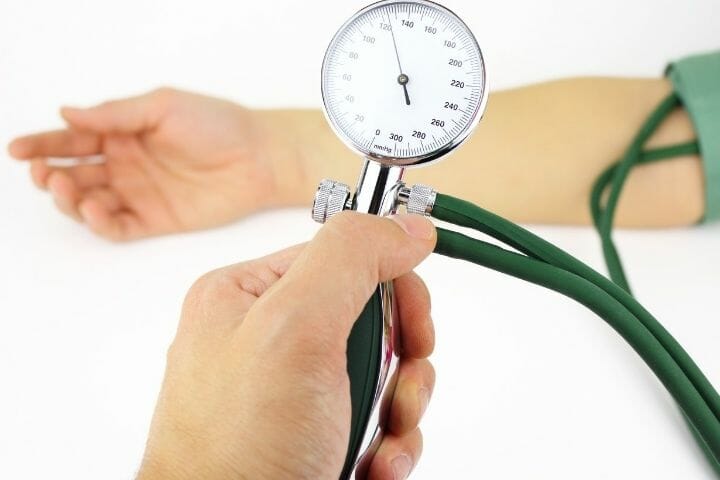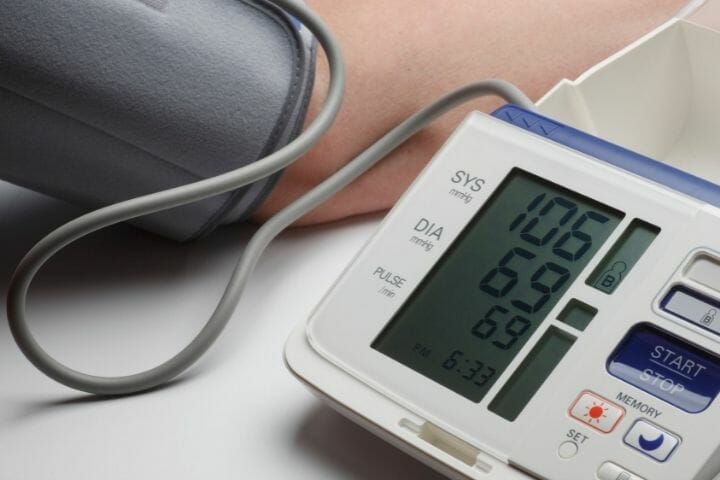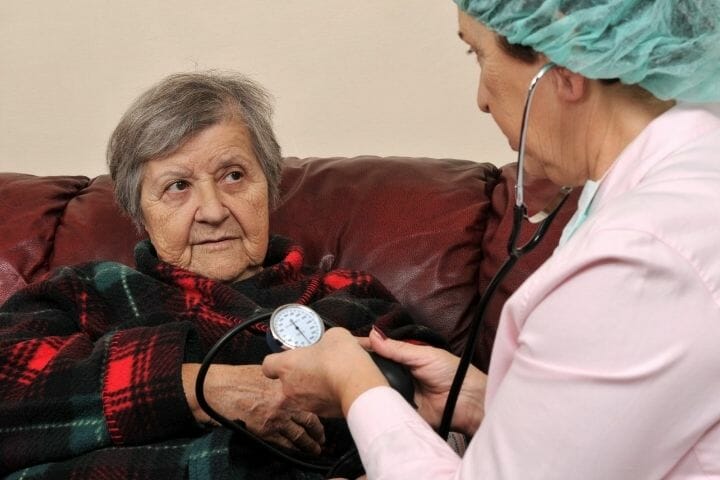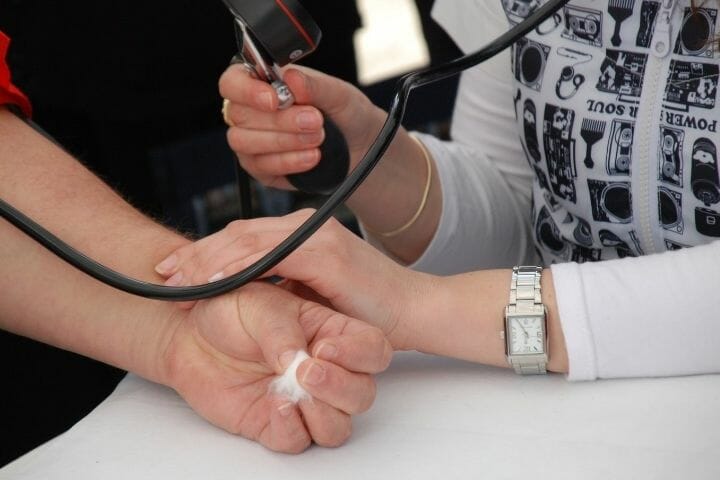High blood pressure affects millions of people worldwide. Let’s discuss some important blood pressure statistics in this article.
Your heart pumps blood into the arteries to carry energy to different organs of your body. Flowing blood puts pressure on the walls of your arteries and veins, just like water flowing in a pipe puts pressure on the walls of the pipe. The pressure exerted by the blood on the artery walls as it flows is called blood pressure.

High blood pressure or hypertension is one of the most common health conditions faced by most Americans. Unfortunately, 68 million Americans, i.e. one in three adults, are high blood pressure patients, and 20 percent even don’t know that they have it.
This article discusses some shocking and important blood pressure statistics that are sure to jolt you out of inaction and move you towards a healthier lifestyle.
Contents
What Do Blood Pressure Numbers Designate?
Two numbers designate your blood pressure. The first number is systolic blood pressure which measures the blood pressure in arteries when your heart beats.
The second one is called diastolic blood pressure, which measures the blood pressure when the heart takes rest in between two beats. For instance, if your measurement reads 120 systolic and 80 diastolic, you say 120/80 mm of Hg.

The normal blood pressure is always less than 120/80 mm of Hg. But when your blood pressure goes above the normal range, you suffer from hypertension, which can increase the risk of several health problems like heart attack, stroke, or heart failure.
The American cardiology and American Heart Association published new guidelines for high blood pressure. They defined high blood pressure as pressure above 130/80 mm Hg. Stage 2 high blood pressure is defined as the pressure at or above 140/90 mm Hg.
Blood Pressure In U.S Adults
- In 2019 half a million people died in the United States due to hypertension.1
- Almost half of the adults (47 percent or 116 million) in the U.S have hypertension.1
- Only 1 in 4 adults (24 percent) with high blood pressure can keep their condition under control.1
- Almost 45 percent of adults (i.e. 37 million) with hypertension usually have 140/90 mm of Hg or greater than it.1
- 30 percent of American adults have prehypertension which increases the risk of heart diseases, heart attack and heart failure.2
- Sixty-nine percent of adults who have their first heart attack,77 percent of people who have their first stroke, and 74 percent with chronic heart failure are patients of high blood pressure.2
- Almost 34 million people in the United States who are recommended to take medicines must be prescribed, and they should stand to start taking them. Again 19 people in this group Ii.e, two out of three adults) have a blood pressure of 140/90 mm of Hg or more.1
- In a 2017-2018 study, it is estimated that three-quarters of adults above 60 years old have high blood pressure.5
Financial Costs Of Blood Pressure
- Hypertension costs the nation about $131 to $198 billion every year. The total cost includes medicines for treating high blood pressure, health care services and productive loss because of premature death of the adults.3
- It is estimated that adults diagnosed with high blood pressure pay $2000 more annual health care costs than those without hypertension.4
- The Medical Expenditure Panel Survey, calculated the medical expenditure of hypertension patients in the United States for 12 years. The 2003-2014 data includes 224,920 adults, from which 36.9 percent had high blood pressure. The patients with high blood pressure have 2.5 times the inpatient costs, double the outpatient costs and almost triple in buying prescribed medicine compared to the one without high blood pressure.4
- The annual costs subjected to high blood pressure are expected to double in the next two decades based on 2010 yearly costs. It will become almost $200.3 billion by 2030.2
- Reducing the sodium intake from 3,300 mg to 2,300 mg per day can save almost $18 billion in health care costs and reduce the blood pressure cases by 11 million every year.2

Rate Of Blood Pressure Varies By Sex
Anyone can have high blood pressure regardless of age, race, and socioeconomic status. However, some groups are more likely to have a high blood pressure than others.
- Men are more likely to have a high blood pressure than women. So the costs of health care increase in comparison to women.1
- In the survey period of 2017-2018, the prevalence of hypertension was 45.4 percent among adults age 18 and above. It was higher among men(51 percent) than women(39.7 percent).5
- The prevalence of high blood pressure increases with age.5
Rate Of Blood Pressure Varies By Race
- The survey period between 2017-2018 estimates that the prevalence of hypertension was higher in non-Hispanic black adults (57.1 percent) than non-Hispanic whites(43.6 percent) and Hispanic (43.7 percent)adults.5
- Among men, the prevalence of hypertension was higher in non-Hispanic blacks (57.2 percent) than non-Hispanic whites (50.2 percent) and Hispanic (50.1 percent) adults.5
- The percentage of prevalence of hypertension is similar in both non-Hispanic men and Hispanic men.5
- Among women, the rate of prevalence of hypertension is higher in non-Hispanic blacks(56.7 percent) than non-Hispanic whites(36.7 percent) and Hispanic(36.8 percent) adults.5
Rate Of Blood Pressure Varies Among Adults By Educational Level
- The 2017-2018 study estimates that the prevalence of hypertension is lower in college graduates (38.5 percent) in comparison to adults in high school or less(47 percent) and more than high school or some college-going adults(50.5 percent).5
- Among men, the prevalence of hypertension was higher in more than high school or college education (57.6 percent) in comparison to college graduates (46.7 percent) and high school or less (50 percent).5
- Among women, the prevalence of high blood pressure was higher in more than high school or some college(43.9 percent) than high school or less(42.9 percent)and college graduates(31.3 percent).5
Rate Of Blood pressure Varies By Geographical Location
- The hypertension rate is high in West Virginia (43.8 percent) in comparison to Georgia(34.8 percent), North Dakota(29.8 percent) and New York(29.6 percent).6
- The rate of hypertension is low in Utah (25.8 percent) and Colorado(25.8 percent) in comparison to other States of the United states.6
Rate Of Hypertension Worldwide
- It is estimated that 1.28 billion aged adults 30-79 years have hypertension and two-thirds of them live in low and middle-income countries.7
- 46percent of adults among them are not even aware of hypertension.7
- Forty-two percent of the adults are diagnosed with hypertension and treated.7
- Approximately one in five adults (21 percent) have hypertension under control.7
- Hypertension is the main reason for premature death throughout the World.7
- One of the global targets is to reduce the prevalence of high blood pressure by 33 percent between 2010 and 2030.7

Summary
When the blood pressure stays high for a long time, it causes the heart to pump harder and work overtime, resulting in serious health problems like kidney and heart failure.
You can treat high blood pressure by maintaining a healthy lifestyle and taking medicines daily. I hope these statistics help you understand the extent of the challenge that Blood pressure-related problems pose.
If you have further questions related to blood pressure statistics in the comment section, please post them in the comments section and we will try to provide you with all the relevant information. Lastly, please don’t forget to share this article with others searching for this information.
You might like to read: Heart Disease Guidebook For Seniors And Caregivers
References
- https://www.cdc.gov/bloodpressure/facts.htm
- http://www.measureuppressuredown.com/PR/highBPStats_pr.asp
- https://www.cdc.gov/policy/polaris/healthtopics/highbloodpressure/index.html
- https://pubmed.ncbi.nlm.nih.gov/29848493/
- https://www.cdc.gov/nchs/products/databriefs/db364.htm
- https://stateofchildhoodobesity.org/hypertension/
- https://www.who.int/news-room/fact-sheets/detail/hypertension
